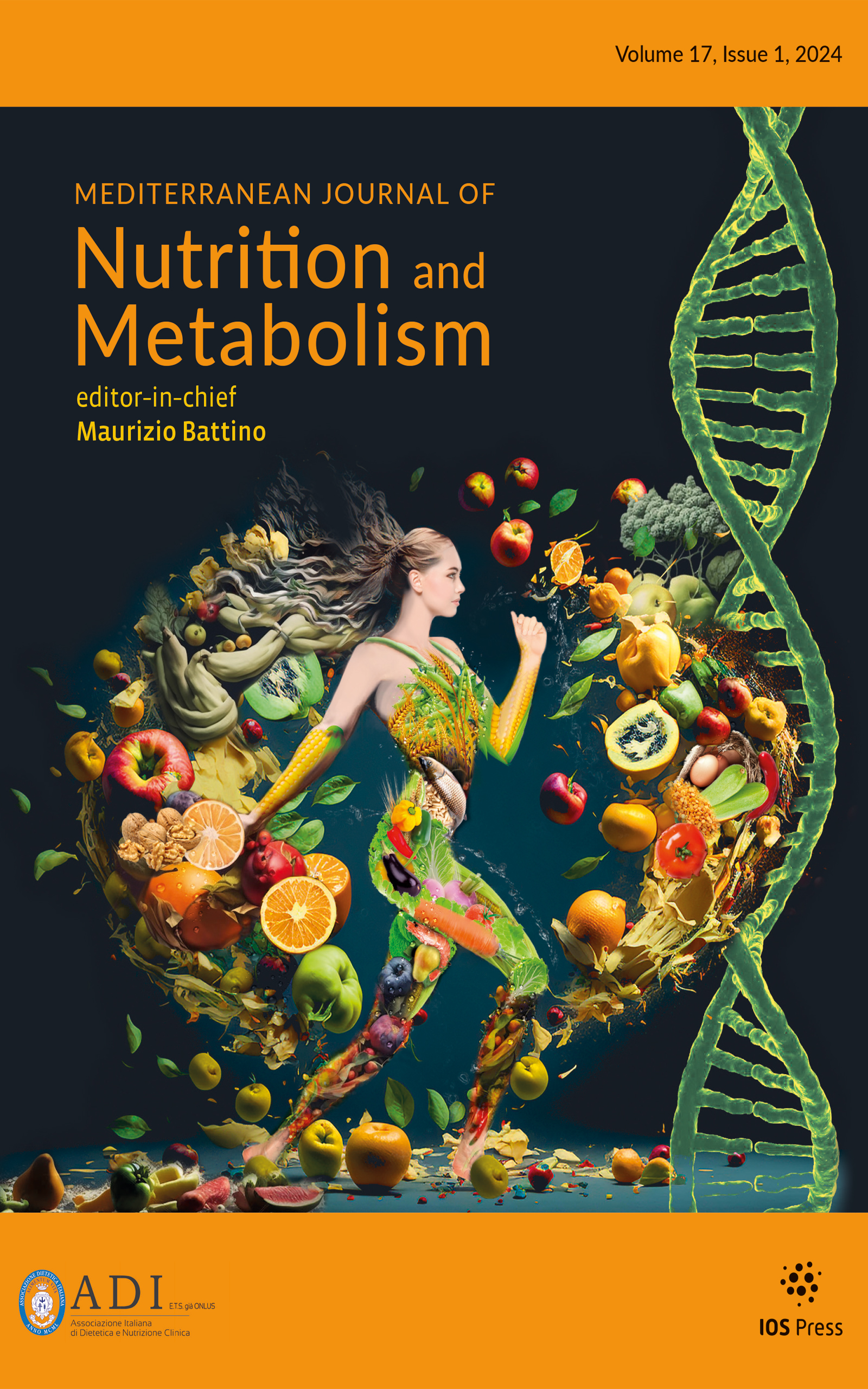Authors: Rossi, Filippo | Alberto, Battezzati | Jessica, Capraro | Simona, Bertoli
Article Type:
Research Article
Abstract:
BACKGROUND: Several researches studied the relationship between Ca assumption and overweight/obesity. Levels of Ca supplementation higher than requirement, were related to increased fat loss in subjects at ipo-caloric diet and Ca from dairy foods resulted more effective than Ca from mineral source in the promotion of weight loss. OBJECTIVE: Since the available studies were conducted using very high levels of Ca supplementation or on subjects fed Ca lacking diet, we studied the role of Ca from dairy foods on subjects receiving ipo-caloric diet, with Ca content adequate to the requirements. METHODOLOGY: 40 pre-menopausal, women nursed for
…their obesity and eating or not dairy foods, were recruited for the study. They received ipo-caloric diets, with Ca equal to requirements. Subjects avoiding dairy products received also a Ca supplement (No Dairy group, n = 15), while other women eating at least 2 servings/d of low fat dairy products (Dairy group, n = 40). Body weight, abdominal fat and blood parameters were monitored at the beginning and at the end (3 months) of the experiment. Age and BMI were: 37.7 ± 7.5 years and 34.4 ± 3.7 for subjects included in the Dairy group and 39.8 ± 9.8 years and 33.8 ± 3.5 for women of No Dairy group. RESULTS: Women in the Dairy group showed a weight loss of 7.03% respect the initial weight, while in women avoiding dairy products the weight loss was 3.21% (P < 0.01). The whole body fat loss was 10.79% and 6,0% , for Dairy and No Dairy respectively, however the consumption of Ca from dairy foods did not affect waist circumference and abdominal-visceral fat. No evidence of significant effect of the food treatments on the main haematological parameters related to the adipose tissue metabolism were seen. Insulin levels did not showed significant variations. Leptin concentration in blood decreased between the beginning and the conclusion of the trial as a consequence of fat mass decrease (P < 0.10), but without difference between the dietary treatments. Instead the IL-6 showed a higher reduction in subjects receiving the Dairy+ diet compared to diet without dairy products. The IL-6 levels showed a significant decrease between the beginning and the end of the experiment, apart from the diet (1.20 vs 0.66 pg/ml; P 0.0135). Both the adiponectin and the unesterified fatty-acid concentration were not influenced by the diet but, while adiponectin decreased between the beginning and the end of the study, NEFA did not show significant variations along time. IL-6 was positively correlated with leptin and fat mass, confirming the relationship between fat accumulation and inflammatory status. CONCLUSIONS: Diets containing dairy foods have increased body weight and fat loss compared to diet lacking of milk and derivatives. Also the blood levels of IL-6 resulted lower in Dairy diets.
Show more
Keywords: Ca, dairy products, IL-6, adiponectin, obesity
DOI: 10.3233/MNM-150035
Citation: Mediterranean Journal of Nutrition and Metabolism,
vol. 8, no. 2, pp. 165-174, 2015





